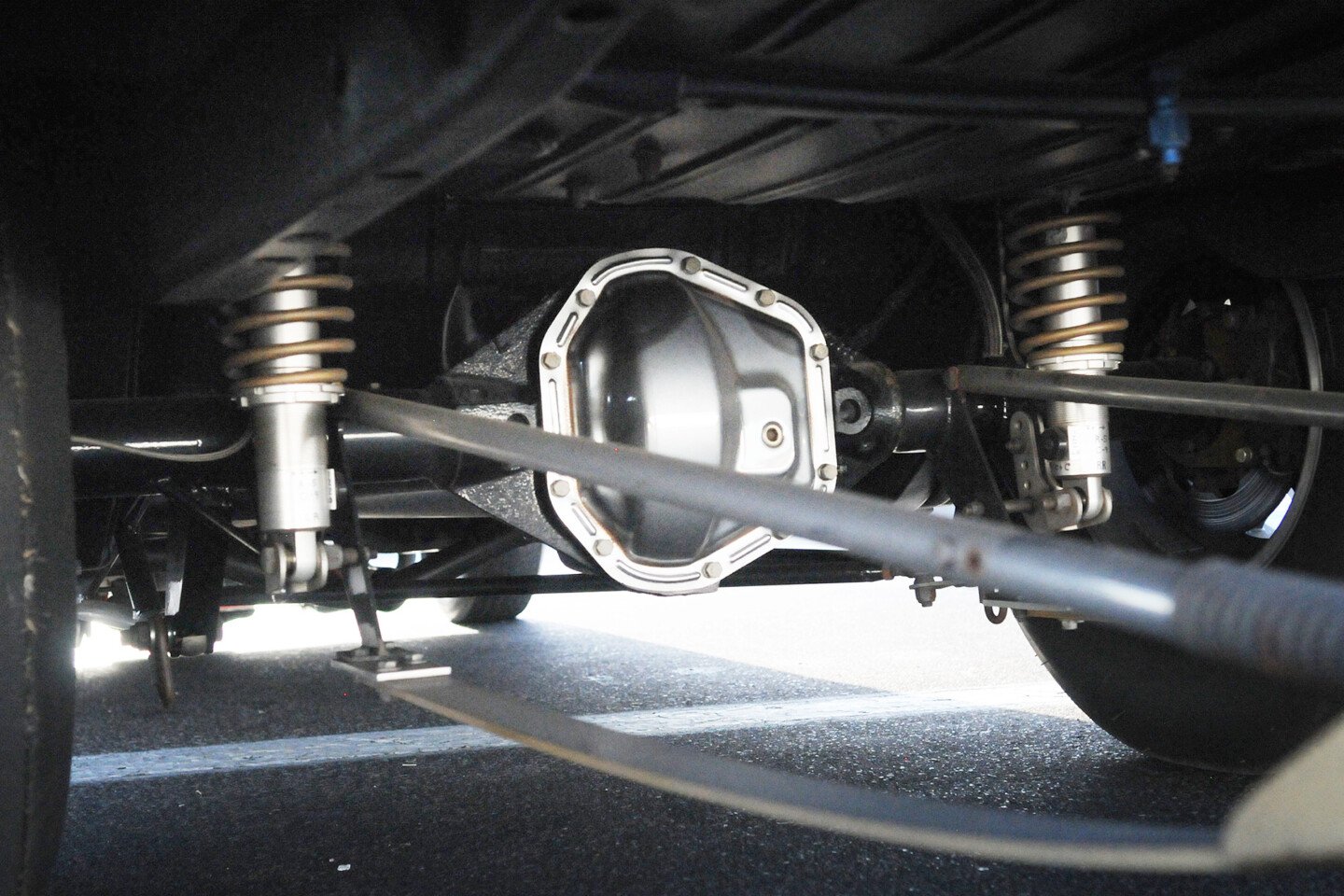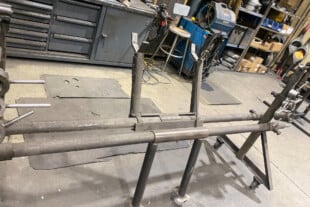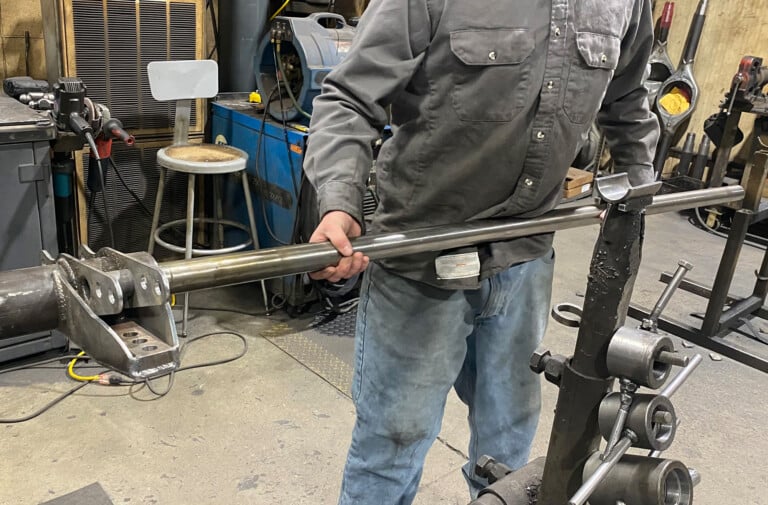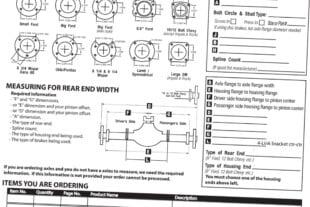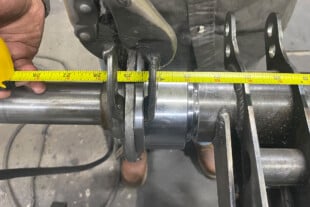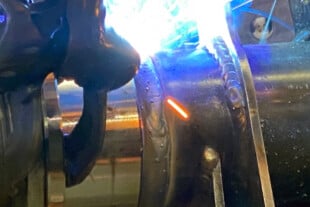If you know what rearend configuration you want to use under a new or ongoing project, and the new rearend housing is the perfect width for what you need, you should also buy a few lottery tickets. When factoring around big tires or slicks, finding a rearend housing that perfectly matches your required width is rare.
Typically, an enthusiast will find a donor rearend housing, usually wider than they need, and narrow it to able to tuck everything under their car. Suppose you are a talented fabricator or would like to rely on a professional to modify the housing; in either case, Moser Engineering, an industry leader in high-performance drivelines, can extend both products and knowledge to help you get the job done right.
“We can accommodate a lot of requests when it comes to narrowing a rearend, beyond just narrowing alone,” Jeff Anderson, Marketing Director at Moser, says. “We can also replace the housing ends with new, beefier Moser ends that are made here in the USA. We can also replace some factory suspension mounts with Moser products when needed.”
In the Moser Engineering shop, they have developed extensive housing fixtures for their professionals to modify housings to customer specs. If you are a do-it-yourselfer with a good shop and proper cutting and welding equipment, you can get a jig/fixture kit from retailers like Quarter-Max Racing Components.
Sizing Up Your Project
Years ago, hardcore racers and performance enthusiasts chose their rearend type based on their reputation of strength and overall design. Typically, that meant a 9-inch Ford or Dana 60 rearend housing. Those housings were considered the strongest all-around units you could get.
Today, there are more options when you’re considering your housing. Engineering and manufacturing of high-strength internal components provide strength for many housing choices that were not previously available.
Today, these choices are expanded from the 9-inch or Dana rear to the Ford 8.8-inch, 10- and 12-bolt GM, and Chrysler 8-3/4-inch rearends, when combined with strong aftermarket axles, spool, or differential, housing ends, bearings, and more. Another game-changer is a newly manufactured rearend housing with design upgrades that drastically improve overall strength.
When narrowing a used housing, it is often a good idea to go ahead and replace the stock ends simultaneously for a more reliable alignment. A spun axle bearing in a stock housing end can allow for a loose axle bearing fit and possible leaking, so inspect the ends before reuse.
The key to a housing alignment fixture is a large diameter steel alignment bar that maintains the housing's centerline. This fixture assures all bearing points from the differential bearings to the outer housing ends are properly aligned.
“Now is also the time to look at your suspension,” Anderson comments. “We can also replace most factory suspension mounts with stronger products if needed. You would hate to have to redo this later. We can sometimes even straighten a bent housing by applying pressure to flex the housing using a hydraulic press and realigning, or by cutting and replacing the housing tubes.”
Typically, Moser Engineering only requires two days to narrow a housing to a custom width. Always send us an empty and clean housing to avoid delays or added expenses. – Jeff Anderson, Moser Engineering
Correcting a bent housing is not always possible, depending on the severity of the alignment problem. If you have a salvage housing or one with an unknown history that you want to modify, it is always best to pre-check how square the housing is with straight edges and rulers. Anderson adds, “Sometimes you have to cut your losses, and it becomes more cost-effective to replace a donor housing with a new one, than try to repair severe alignment problems.”
“Typically, a customer brings the empty and cleaned-out housing into our shop or ships the unit to us for the work to be done,” Anderson explains. “Just be sure the proper goal dimensions are on paper with the housing.”
Your Alignment Jig Or Theirs
If you are an individual who is into all things cutting, grinding, and welding, then your own alignment kit may be for you. Unless you will do quite a few narrowing jobs on your own, justifying the price for a quality kit may be prohibitive, though.
Using the Moser Engineering order form on their website is the most straightforward way to ensure you supply all of the critical measurements needed for the narrowing process.
“Moser Engineering does not offer an alignment kit, but there are plenty of kits out there,” Anderson notes. “The key thing to look for is a large and true alignment bar. You are basically taking a company’s word for the straightness of the alignment bar, so check reviews on these products before you buy. The next thing to look for is that all four alignment pucks are present for your application.”
“Basically, you align the bearings in the housing ends with the two bearings in the carrier or center section. The alignment must be true all the way through,” Anderson explains. “Some alignment kits only use housing end pucks, which does not truly align the housing ends with your inner differential bearings.”
If the alignment is out of center related to those inner bearings, it will create drag and possibly cause binding in the splines between your axles and spool/differential and shorten bearing life.
This heavy-duty fixture is installed on this 9-inch Ford housing through all bearing points. The two slots in the fixture's face are used for measuring all width points from the pinion centerline.
“At Moser, we use a larger alignment bar than most because it is a production facility, and we narrow many housings daily. We even check our alignment bar weekly to ensure it hasn’t been damaged or moved out of spec,” Anderson says.
Measure Once, Measure Twice
“You must understand the measurements needed and the related terminology,” Anderson cautions. “There is much to consider beyond just trying to get a larger tire and checking clearance on the inner wheel-well. Measure everything!”
Consider your pinion offset. You often must use the factory offset for driveline clearances. However, when using a donor rear from a different platform you have to be mindful of the pinion location from left to right; it can differ from your original housing.
Anderson suggests, “Never forget that Moser Engineering is happy to help you. We will walk you through your application and help you with the donor housing options.”
Moving your tire inward might create conflict between brakes and suspension components related to suspension movement. “Will moving the housing end itself interfere with your ability to get T-bolts into place to install the brakes?” asks Anderson. “Carefully look at your pinch points and clearances from multiple angles. A simple phone call to us for advice from our experts can help you avoid costly mistakes.”
In the case of this housing modification, the customer is making a small width change while still retaining the current suspension mounts. An industrial band saw precisely cuts the axle tube square. The axle tube and housing ends are beveled to begin the welding process.
New Or Resplined Axles
If your hot rod is hitting the sticky dragstrip, the bottom line is that aftermarket axles that are designed, machined, and heat-treated for the abuse of drag racing are a must. But for mild performance and street duty, Anderson fields many questions regarding the resplining of factory axles.
“We get lots of calls concerning reuse of the existing axles,” Anderson says. “The answer to that depends on a few things and will require measurements of the axles in question.”
Anderson continues, “Here are a couple of quick guidelines to consider: due to the spline machining process, we need to get entirely past the old splines to cut new ones. The spline length differs depending on the type of rear you have. Measure the length of the spline, and if it is less than the amount you are removing on each side, then you might be okay.”
With the axle tubes and housing ends prepared with a deep bevel for welding, the Moser fabricator lays down a strong, penetrating weld to give the newly narrowed rear its needed strength.
Take, for example, axles with 2 inches of spline, and we are narrowing 2.25 inches off each side of the housing; in that case, you should be good. Another quick critical measurement is the axle shaft diameter, where the new spline will be cut.
Measure the outside diameter of the existing axle spline surface compared to the diameter of the axle shaft in the area where the new spline will be cut. Some axles may taper to a smaller diameter inward from the original splines. If the axle is the same diameter or larger than the existing splines, you should have enough material to machine new splines.
Housing Welds
Strong welds are everything related to axle tubes, housing ends, and suspension brackets. You might be surprised how much stress the housing is under.
When you think about the loads against the axle tubes during launch, the points between the drive tires and the suspension linkage engage the entire force for moving your race car forward. Your drag slicks dig in, and the opposite force moves your race car forward. The forces, through the mechanical combination of slicks, wheels, axle bearings, axle tubes, and ultimately your suspension, propel your car forward with incredible forces.
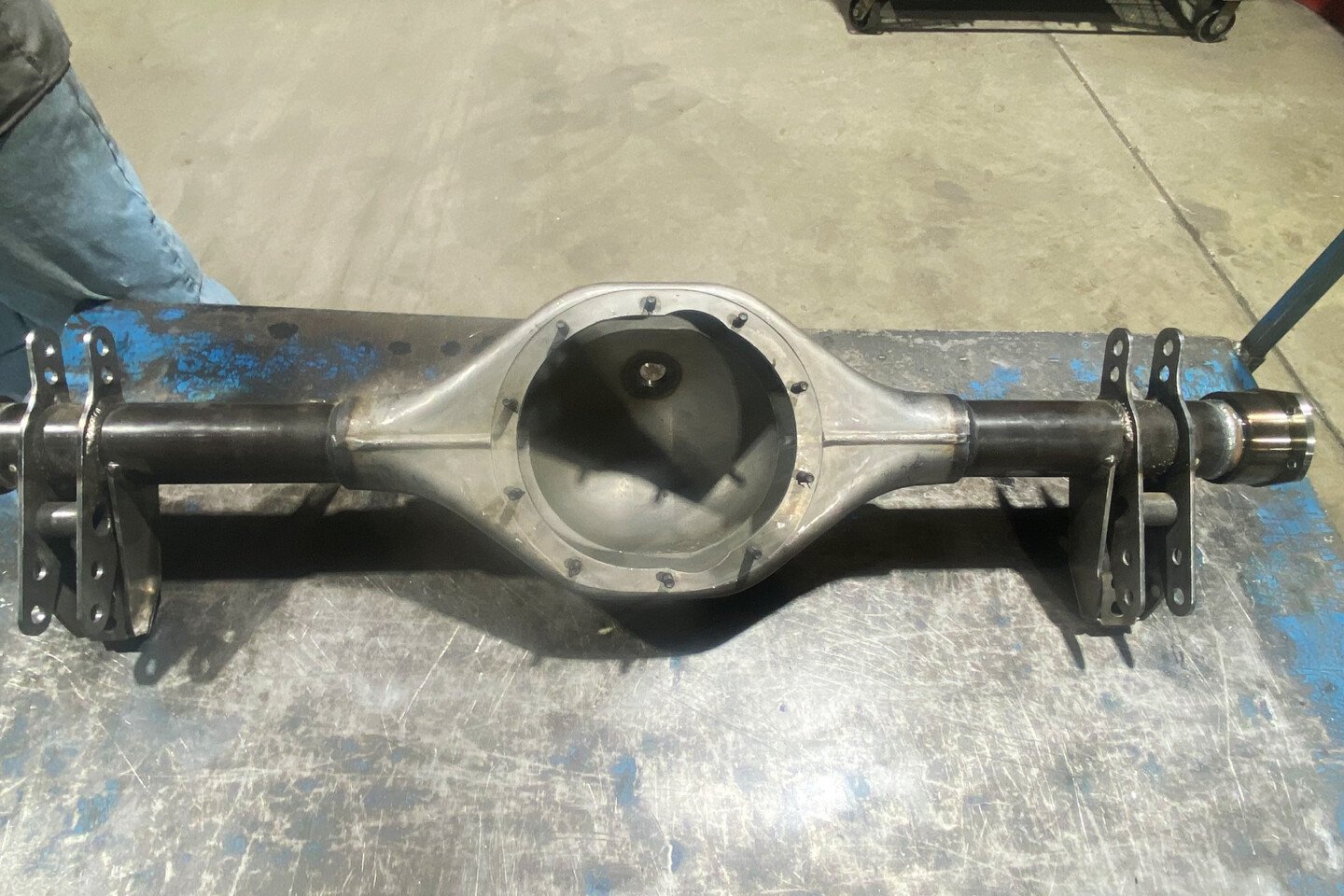
Out of the alignment fixture, this housing is cleaned and prepared to ship back to the customer, typically with Moser’s two-day turnaround.
In a recent example of critical welding, we measured and tack-welded our ladder bar mounts to a new housing project. Then, we shipped the housing to Moser and had them complete the welds while also narrowing our housing; this allowed proper welds to be completed while also in the heavy-duty fixture.
There is no prettier sight than a street or race car with massive tires or slicks tucked within the traditional body shell lines of any shape or size of a car or truck. I have sat at a stoplight, seen a new car with a different body design, and imagined what it would look like tubbed and rolling on some big slicks.
Considering your current or upcoming rearend housing requires thinking of Newton’s law of physics. The force on an object is equal to its mass times its acceleration. That means to launch the mass of your car, acceleration (and your rearend) are exposed to multiplied forces. Shortcuts to the quality of your housing combined with this law of physics could be a bad outcome.




